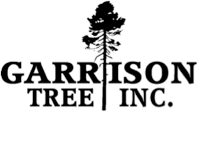A landscape without mulch is like a home without a roof, leaving those below exposed to the harshest conditions of nature. Using mulch on your Putnam County, NY property properly is a hassle-free way to protect your trees and plants for long-lasting health and beauty.
What is mulch?
Sometimes called “top dressing,” mulch is any material laid over the topsoil of a planting bed. Prized for its multi-functionality, mulch retains soil moisture and insulation, seals in essential nutrients, and keeps pesky weeds and other competitive plants at bay. Properly mulching your lawn means less time spent weeding and trimming, healthy plant life, and a reduced water bill due to improved moisture absorption and better drainage. Mulch can consist of biodegradable animal or plant matter, or inorganic materials such as rubber, stone, plastic, or tumbled glass. Both yield stunning aesthetic results, though organic materials enrich and actually contribute to soil substance over time.
How to properly mulch?
Make Preparations
Before mulching, make any desired changes to the landscape underneath and around the area you plan to lay your material. Dig garden beds, install edges and borders, and enrich your soil, if these preparations are included in your planning. Pull weeds, including roots, and place plastic, landscaping fabric, or biodegradable newspaper under your mulching area as a preventative weed barrier.
Time is Essential
The best time to use mulch on your property can fall anywhere from early to late spring, depending on your region. A general rule of thumb is to wait until your soil has thoroughly warmed after winter, but hasn’t yet dried out in the hot summer sun. Use mulch on new or established beds and specimen plants.
Exercise Precision
The amount of mulch you use will directly affect its efficiency. Proper mulch depth ranges from 1 to 5 inches, depending on the material. Finer mulches should be laid in a layer of 1 to 2 inches, while thicker materials can be up to 4 inches deep. If using biodegradable mulch, spread at a depth of 2 to 3 inches.
Leave Breathing Room
Mulch should cover topsoil, not your plants. Leave a clear ring about 2 inches around the base of any single shrub or plant to ensure stems do not soften and develop disease. For larger trees and specimen shrubs, leave a mulch-free ring equal to their canopies’ radii.
Apply Care When Finishing
After laying down your mulch, give enough water to keep it moist and let it settle. Spread the area with a rake for suitable distribution and to guarantee an even layer.
Maintain Sufficient Upkeep
Check the mulch on your property regularly to ensure it remains moist, especially around the end of summertime. If your mulch becomes dry, you may need to rake it again or add more, though the latter should be done only if a thin layer remains. Organic mulches, which break down into the soil, should be covered with new material once every few years.
Using mulch on your property properly is a simple skill that preserves the inherent charm of your landscape. Keep your trees and plants strong with the right preparation, timing, precision, knowledge, and upkeep when mulching your yard.
Image: Flickr rfduck

